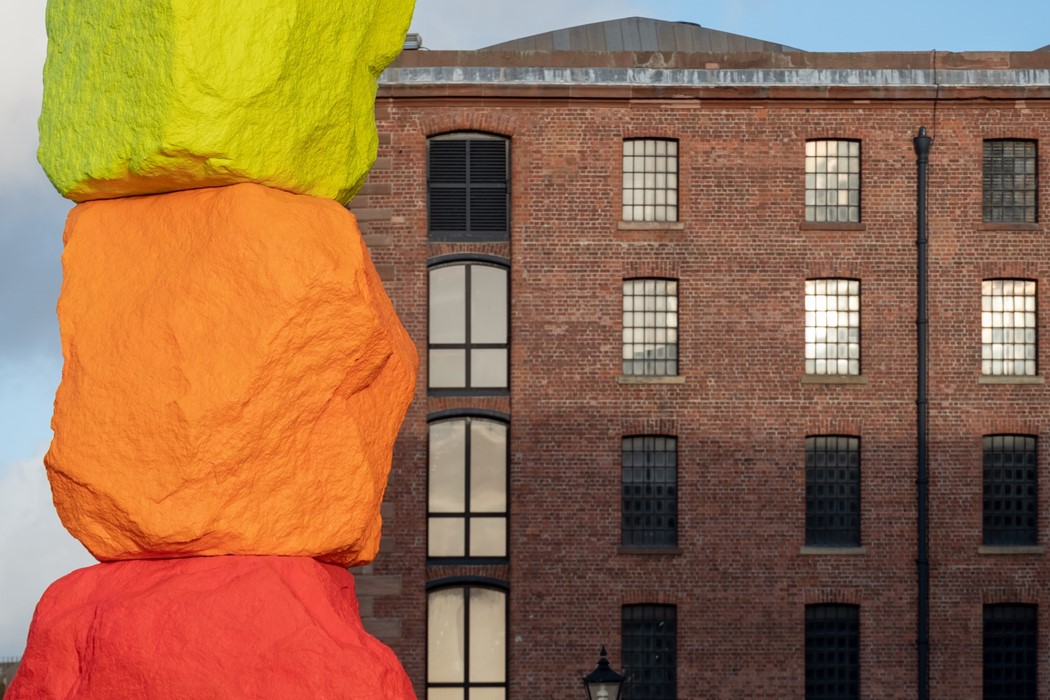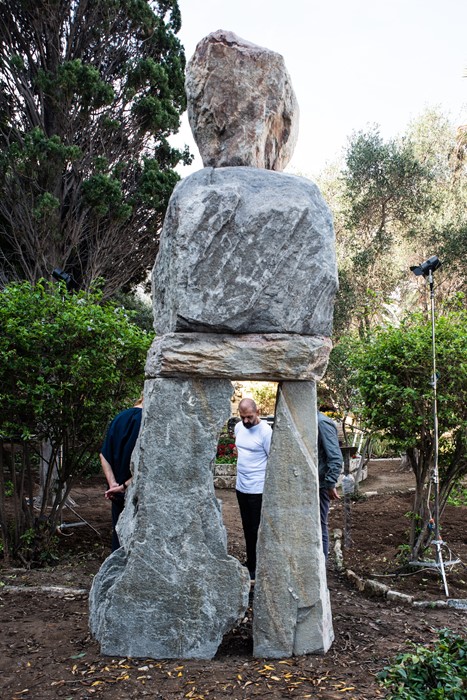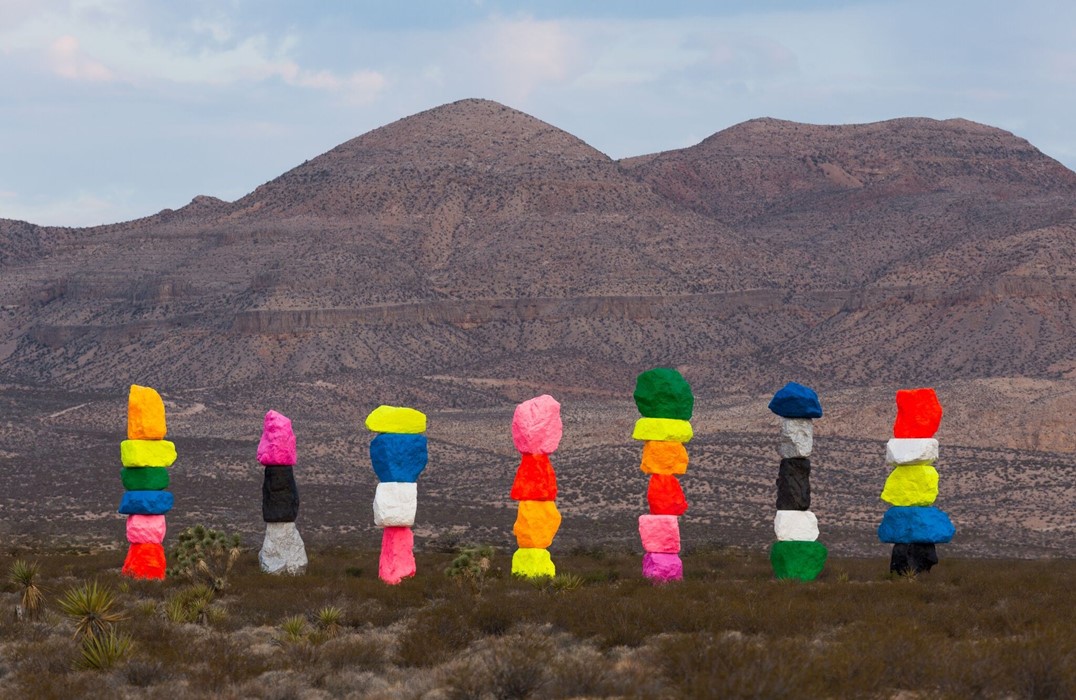As his first UK-based public work appears in Liverpool, AnOther speaks to the artist known for his neon-toned land art
Sleeping clowns, fluorescent rock formations, rainbow signs and comic strips are just a few of the forms Ugo Rondinone has employed to create works of art with universal appeal. The Switzerland-born, New York-based artist has always championed feeling over thought when encountering art and seeks to engage everyone from “a small child to a grandmother” with his work.
This month he unveils two seemingly disparate sculptures in different parts of Europe. The first is a gigantic stone figure titled The Radiant, housed in the coastal garden of a former Maltese fortress, which will soon become MICAS, the island’s first international contemporary art museum. The latter is a tower of neon stones piled ten metres high on the Royal Albert Dock in Liverpool. Commissioned by Tate and the Liverpool Biennial, it is Rondinone’s first public work in the UK, and follows the same format as his heavily Instagrammed sculpture Seven Magic Mountains, which features a collection of these colourful totems installed in the Nevada desert just outside of Las Vegas, as if dropped from the heavens. “Established land art from the 1960s usually blends in with nature,” he explains, “but I wanted to bring artificiality into it, with bright neon colours. Now Liverpool will have one of them, against the greyness of the dock.”

Conversely, The Radiant seems as if it could have been standing for hundreds of years. The Swiss blue stones might not be native to Malta, but their crude assemblage is reminiscent of the megalithic structures found at Ħaġar Qim, an ancient Maltese temple considered to be one of the earliest religious sites on earth. For Rondinone, who has long established his series of human-esque rock statues, the connection is clear: “the stone figure is something universal, you see it in every culture. It’s completely timeless.” The visceral reaction he seeks to invoke in his contemporary interpretations is further compounded by the works’ titles. “All my stone figures are named after human feelings, and ones you wouldn’t necessarily associate with the material. It gives them a softness, whether they are large or small.”
On first look, the Liverpool and Malta commissions do not appear to have much in common beyond materiality, but associations can be drawn. For one, both sculptures are positioned by developed watersides, and the relationship between these locations as sites of British industry and colonialism is palpable. Furthermore, Liverpool marks ten years since it was the European Capital of Culture, while Valletta (the nearby Maltese capital) holds the honour this year. This ongoing sense of dualism is something Rondinone has often sought when presenting public sculpture. “They work as a contrary to each other, on the harbours. A similar thing happened back in 2013 when I was asked to develop a public sculpture for the Rockefeller Center, right in the middle of Manhattan, in this incredibly developed area. At the same time, I was asked by the Reno museum to develop Seven Magic Mountains in the desert. My work always deals with duality, so in both cases, I wanted to work with the same material, but one in a built-up area, and one in nature.”

Each case also conveys Rondinone’s commitment to making a real connection with people. “Public art should embrace the people at every level, that is why my works are so childlike. When you see them, you recognise something on a basic level. You see a stone figure, that’s what it is; you see a pile of colourful stones, that’s what it is.”
He has also gone further to engage the next generation in Malta by presenting Joy, a temporary installation that features hundreds of wishing bells hung in the trees surrounding his rather more monumental statue. Each bell holds a wooden label inscribed with an aspirant statement from local school children, and as these tags flutter, they fill the garden with delicate chimes. “I wanted to involve children because they will secure the future of this museum, and this location. Hopefully, they will bring their families to see the wishing bells, which will give them an entryway into the museum. To know that they were part of it from the beginning makes a difference, and if even ten children retain a link with the museum, it is worth it.”

This form of inclusivity also manifested itself in the desert when the local community took it upon themselves to protect and maintain the sculpture. “In Las Vegas, in the first week it was packed,” Rondinone explains, “and after that, the neighbourhood arranged to look after and protect it. They embraced it and felt that it was something that belongs to them.” This is exactly the kind of engagement he hopes to manifest in Malta. The Radiant is accompanied by a plaque which dedicates it to the local children and will eventually stand at the entrance of the new museum. The artist also hopes that the wishing bells can remain in situ as long as they can, in the hope that as many people as possible make a pilgrimage to the gardens, which were until recently completely derelict and neglected. “They really are forgotten treasure… and here I hope my work can connect the past with the future.”
Liverpool Mountain is open at Tate Liverpool now, and The Radiant is open at Sa Maison Gardens, Malta, until March 31, 2019.
